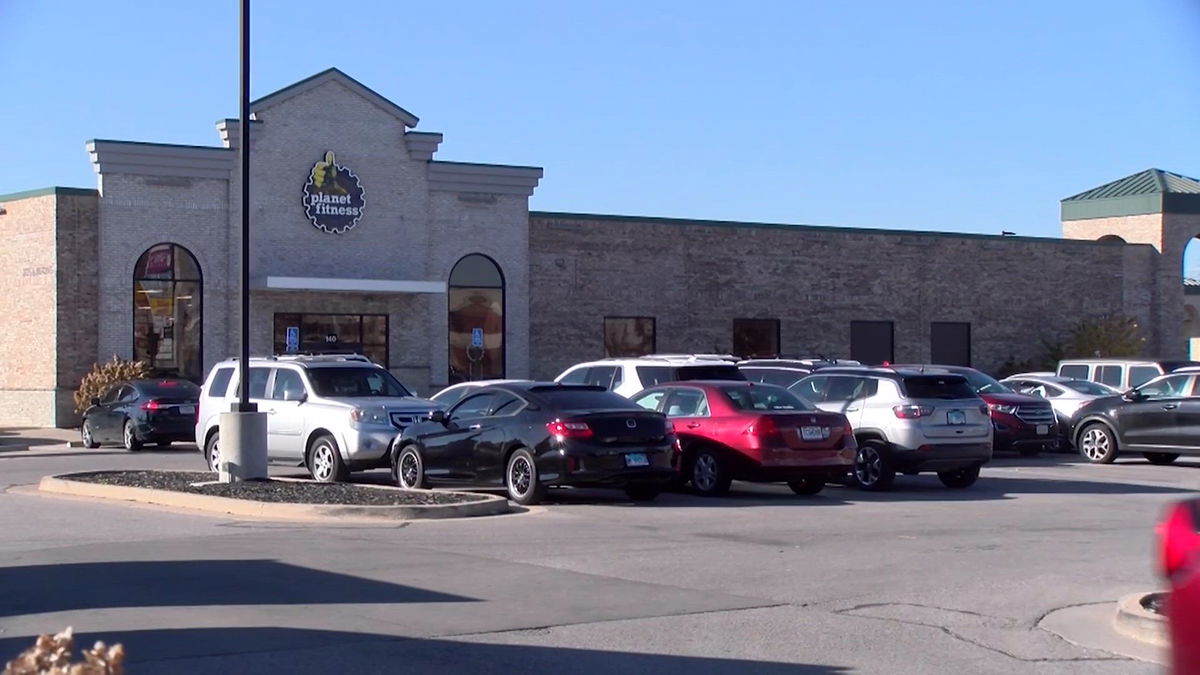Bussiness
The JD Vance and Tim Walz debate is likely the last big night of the 2024 campaign. Here’s what to expect.
- Ohio Sen. JD Vance and Minnesota Gov. Tim Walz will face off in their long-awaited debate on Oct. 1.
- The debate comes roughly a month before the hotly-contested November general election.
- Both Vance and Walz are expected to be aggressive surrogates for their respective running mates.
Sen. JD Vance of Ohio and Gov. Tim Walz of Minnesota are set to meet for the only scheduled vice-presidential debate on Tuesday, a face-off that could mark the final major moment of the campaign.
Vice presidential debates are typically the undercard on the political calendar. But as of now, Vice President Kamala Harris and former President Donald Trump are not set to debate again. This means that on Tuesday night, it will be up to their running mates to deliver the closing argument to millions of Americans — even if far fewer are expected to tune in than the roughly 67 million viewers that watched the Harris-Trump debate.
Their closing arguments are likely to sound familiar. While they may stand across the stage from each other, both candidates are expected to focus more on the top of the ticket. Vance, in particular, has foreshadowed that while he’ll take his shots at Walz, his main target will be Harris.
Peter Loge, an associate professor and the director of the School of Media and Public Affairs at George Washington University, told Business Insider that the vice-presidential debate offers an opportunity for each candidate to lean into their party’s message.
“People don’t tend to vote for or against vice-presidential candidates, but what the candidates can do is reinforce to voters what the party or the campaign stands for,” he said. “For Walz, it’s an opportunity to introduce himself to a lot of Americans that still don’t know who he is, and to reinforce a Harris message of middle-class, low drama, reasonable solutions.”
“Vance had a higher national profile before he became Trump’s running mate, but he still has a chance to sort of maybe reset himself with voters a little bit,” he continued. “But mostly to reinforce the Trump approach to immigration, the economy, and American identity.”
Both men are proud sons of the Midwest, but the similarities generally end there.
The Ohio Republican has been a staunch defender of Trump and has doubled down on conservative stances on everything from reproductive rights to childcare.
Meanwhile, Walz has sought to be the happy warrior to Harris, whose presidential candidacy launched in July only after President Joe Biden chose to step aside as the presumptive Democratic presidential nominee after a disastrous debate performance.
Trump could really use a strong night from Vance. Harris’ national polling has ticked up since what was viewed as her convincing debate victory. Election forecaster Nate Silver now has her as the slight favorite to win.
Here are the important facts you need to know before the debate.
When is it and how can I watch it?
The 90-minute debate between Vance and Walz is set for Tuesday at 9 p.m. ET at the CBS Broadcast Center in New York City. It will be broadcast on CBS and will also be available to livestream on platforms where CBS News 24/7 and Paramount+ are offered.
Who are the moderators?
Margaret Brennan, the moderator of CBS News’ “Face the Nation” and the network’s chief foreign affairs correspondent, and Norah O’Donnell, the anchor and managing editor of “CBS Evening News,” will moderate the debate. This will be the first time either Brennan or O’Donnell have moderated a vice-presidential debate.
Scott Olson/Getty Images
What questions can we expect on the economy?
While only the moderators and a select few others know the questions, the economy will surely come up. Polls have long shown that it is the most important issue for voters during the election. Trump and Vance have largely banked their run on nostalgia for a pre-COVID-19 economy. Harris and Trump outlined their economic agenda in the lead-up to the debate. Harris has taken Trump to task for proposing across-the-board tariffs, which she argues will be akin to a tax on American families.
Bradley Tusk, a political strategist turned VC, said it’s important to remember that regardless of whatever sweeping promises the candidates make they will face a tall task getting it through Congress.
“Passing any sort of transformative legislation for either of them is going to be virtually impossible,” Tusk told Business Insider.
The House remains extremely close among the small number of swing districts remaining. It’s possible either Harris or Trump could be sworn in with a divided Congress.
Without a trifecta, neither party could use reconciliation, a budgetary power that allows some legislation to pass with just 50 votes, ramming through a potential filibuster. Otherwise, the Senate’s de facto 60-vote threshold would cause either side to whittle down their proposals.
“Realistically, their ability to take the ideas they are proposing and turn them into legislation that is passed and enacted is close zero, so the only things that really matter are things you can do via executive order,” Tusk said.
What does Vance need to do?
Vance has had the rockiest debut of a vice presidential nominee in recent memory. He first rose to national prominence when his memoir, “Hillbilly Elegy,” became a bestseller after Trump’s election. He might be most associated now with calling out “childless cat ladies.”
Trump’s team likely expected to be confronted with Vance’s past as one of the most prominent Never Trumpers. But it’s the Ohio Republican’s past comments about women that have struck a chord.
In myriad polls taken since August, Walz, a native Nebraskan, is viewed much more positively than Vance.
Since being tapped for the vice-presidential slot, the Ohio lawmaker has been repeatedly forced to address a series of controversial past statements — including his widely-discussed remarks where he described several Democratic Party officials as “childless cat ladies” who didn’t have a stake in the future of the US.
More recently, Vance has defended his amplification of debunked claims involving Haitian immigrants in Springfield, Ohio, who were accused of eating local pets. Even Vance’s own governor, fellow Republican Mike DeWine, has begged him to stop.
Tuesday night may not fix everything, but Vance needs to seize the opportunity to make a better second impression.
Jeff Swensen/Getty Images
How can Walz build on his recent rise?
Few people had heard of Walz, a longtime public school teacher who served in the Minnesota National Guard and first ran for the House in 2006, when he burst onto the national scene earlier this summer by calling Republicans “weird.”
Then again, everyone thought the vice presidential debate would feature Harris.
Vance and Trump have sought to tear into Walz’s record and his misstatements about his military service. But polls still show that if voters have an opinion of the Minnesotan, they tend to like him.
As governor, Walz has pursued a populist progressive policy agenda, signing into law a bill guaranteeing paid family and medical leave and further enshrining the right to an abortion into state law. As a congressman, he managed to repeatedly hang onto his seat in a district that had trended away from his party.
Harris loves introducing him as “Coach Walz.” If viewers leave Tuesday’s debate with that impression, Walz’s folksy nature will have won out. And with Harris already holding a narrow lead in the national polls and in some of the key swing states, that might be just enough to run out of the clock.
What have Vance and Walz said about each other?
Both Midwestern men have torn into each other. Vance criticized Walz over the timing of his military retirement, arguing that the fellow veteran abandoned his unit before the Iraq War. The facts of the situation are more complicated, as Walz retired after 24 years in the Army National Guard to run for Congress. His battalion wasn’t officially told they would deploy to Iraq until two months after Walz retired.
Walz has questioned Vance’s elite education, saying it is not representative of the typical Midwestern. Born into poverty, Vance attended the flagship school in his home state, Ohio State University, before obtaining a law degree from Yale.
What are Vance’s economic views?
Vance’s home state was ravaged economically by declines in the manufacturing sector from the 1990s through the 2010s. But the sector had been in decline before this period, notably with deindustrialization in the 1970s and 1980s.
As a senator, he’s taken on a distinctly populist approach when it comes to economic issues, backing higher tariffs on Chinese imports and expressing support for Federal Trade Commission chair Lina Khan’s work on antitrust efforts — specifically as it relates to Big Tech.
What does Walz’s economic record reveal?
With the help of a Democratic-controlled legislature, Walz has ushered in a series of progressive policies. Walz has led a progressive rewrite of the state tax code over the objection of business interests in the state. Minnesota passed the nation’s largest state child tax credit, according to the non-partisan Tax Foundation. Walz also signed into law tax cuts on Social Security benefits and a temporary expansion of property tax credits.
Walz also broke from most other governors, including fellow Democrats, in pushing for tax increases. According to the Tax Foundation, Minnesota is the only state to issue a surtax on higher earners’ long-term capital gains and other net investment income. Most controversially, Walz also pushed for a new payroll tax to fund universal paid family and medical leave in the state, which goes into effect in 2026.









